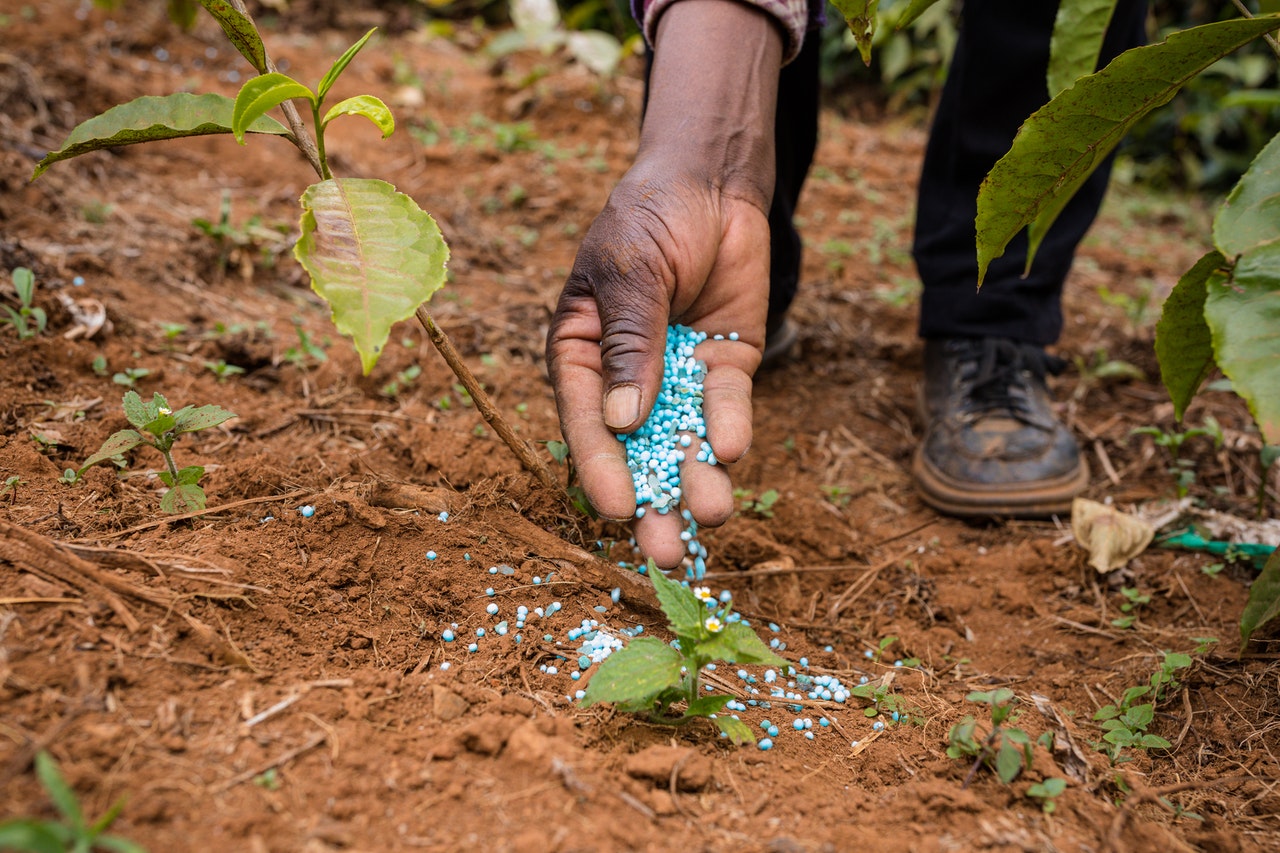The additional nutrients added to crops have caused the population to grow from 1.6 billion people in 1900 to almost 7.8 billion today. Fertilizers have expanded food production, but agricultural intensification comes at a cost to the environment, climate, human, animal, and soil health, according to Carbon Brief.
Global fertilizer production accounts for about 1.4% of annual carbon dioxide emissions, and fertilizer use is a significant source of other greenhouse gas emissions.
Scientists and farmers face a new dilemma: how to feed a still-growing population while reducing the impact of agriculture on the climate and the environment.
Some are trying to stop fertilizer use entirely, others are looking for ways to optimize fertilizer application and management, and still, others are trying to recover lost nutrients from recycled waste.
In addition to carbon dioxide and water, plants need three major nutrients in large amounts to grow: nitrogen, phosphorus, and potassium. These nutrients, which are absorbed from the soil by the plant’s root system, play an essential role.
Nitrogen is the main component of chlorophyll, necessary for photosynthesis, and amino acids are critical for plant development. Phosphorus is actively involved in how plants produce energy. Potassium is key in regulating how a plant transports and uses water.
Without human intervention, plants maintain a delicate balance of nutrients in the soil. But for millennia, people have been adding more of these substances in the form of fertilizers to stimulate plant growth and increase yields.
Fertilizers can be divided into organic fertilizers and mineral fertilizers, sometimes called chemical or synthetic fertilizers. Together, nitrogen, phosphorus, and potash fertilizers are “NPK fertilizers.”
According to the Food and Agriculture Organization of the United Nations (FAO), today more than 100 million tons of synthetic nitrogen fertilizers are used annually in the world for growing crops.
About half of this volume is used to increase the production of cereals, mainly corn, wheat and rice. In addition, about 50 million tons of phosphate fertilizers and more than 40 million tons of potassium are used annually. Six companies have market capitalizations in the tens of billions of US dollars: Canadian Nutrien, Australian Wesfarmers, US CF Industries, SABIC Agri-Nutrients Company (Saudi Arabia), US Mosaic Company and Israel’s ICL Group.
The use of synthetic fertilizers is widespread in the US, Canada, and Western Europe, where large-scale mechanized farming is the norm. It is also prevalent in several large, fast-growing economies, including Brazil, China, and India. In contrast, fertilizer use is low in most African countries, with the exception of Egypt.
On an industrial scale, nitrogen fertilizers are produced using a chemical reaction known as the Haber-Bosch process: burning fossil gas to produce hydrogen gas, then taking that hydrogen and nitrogen from the air and pulverizing at high temperature and pressure to produce ammonia.
The rapid expansion of synthetic fertilizers use coincided with the Green Revolution, a large-scale push to increase agricultural production around the world in the 1960s, especially in the global south.
The green revolution is associated with developing new genetically modified crop varieties for higher yields and the increased use of agrochemicals, irrigation, and mechanization.
But all this increased productivity was only made possible by the expansion of fertilizer production, says Mark Sutton, an environmental scientist at the UK Center for Ecology and Hydrology: “Genetic engineering was the engine of the Green Revolution, but the fuel of the Green Revolution to power the engine was fertilizer.”

